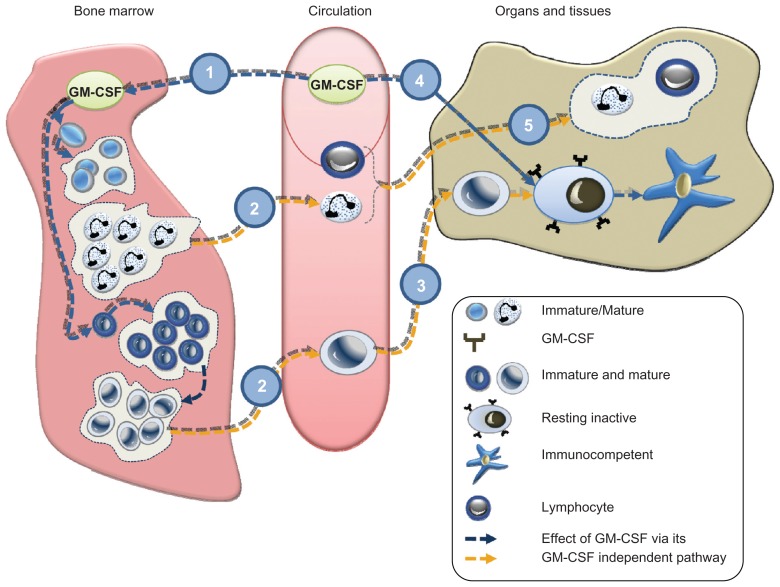Figure 1.
Systemic administration either by infusion or subcutaneous dosing of granulocyte-macrophage colony-stimulating factor (GM-CSF) activates the stem cells of neutrocytes and macrophages/monocytes. Consequently these cell lines maturate and proliferate (1). The circulating monocytes (2) become tissue macrophages, which are present in both bone marrow and peripheral organs including the lungs. The monocytes transform into tissue macrophages in tissue (3). After stimulation, GM-CSF receptors transform resting alveolar macrophages into immunocompetent dendritic cells corresponding to the autocrinic GM-CSF response locally (4), during which process both T-lymphocytes and granulocytes are being recruited from circulation (5). In acute radiation syndrome, cells in bone marrow and tissue macrophages stop participating in the host because the local GM-CSF is no longer expressed. As a consequence, host defense is reduced with a fatal lack of barriers against endogenous and exogenous microbiological agents, but the administration of GM-CSF via the subcutaneous/infusion route will normalize the host. However, macrophages in the lungs can only be reached by inhalation, the only way to upregulate and to protect the lung host.

